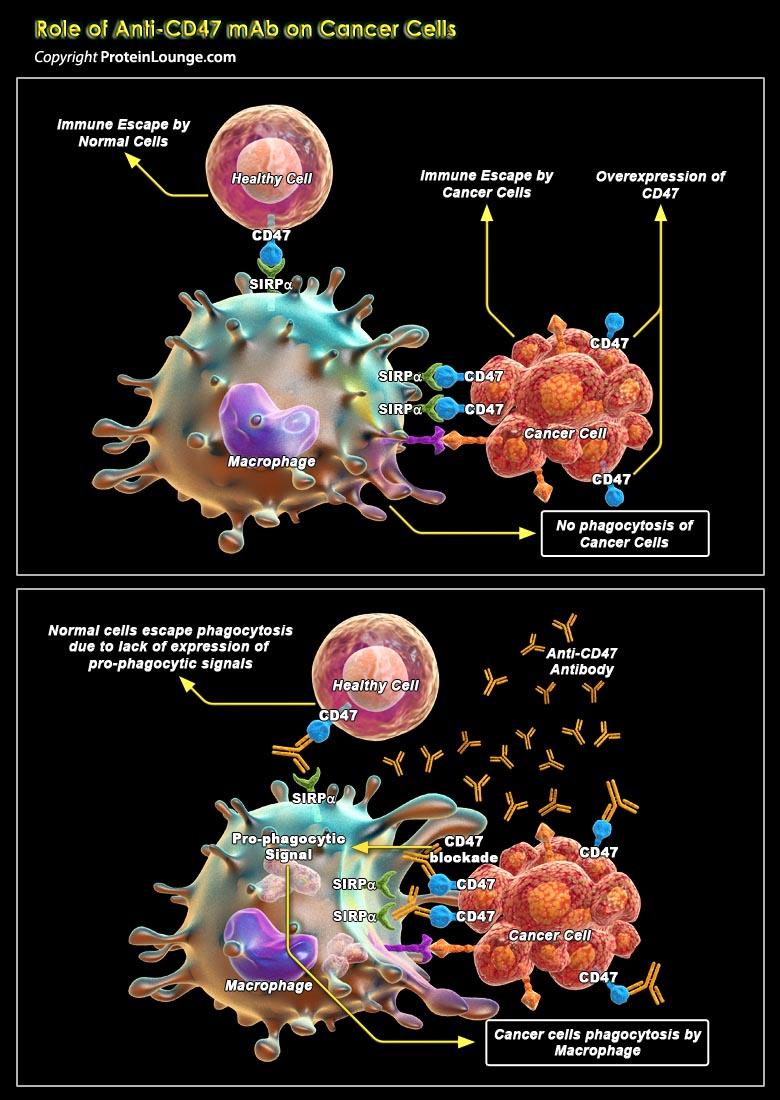
Cancer continues to be a formidable challenge in the field of medical science, necessitating innovative therapeutic strategies to combat its relentless progression. The emergence of immunotherapy has brought about a paradigm shift in cancer treatment, harnessing the body's own immune system to recognize and destroy malignant cells. Among these immunotherapeutic approaches, the utilization of monoclonal antibodies (mAbs) targeting various cell surface markers has gained significant attention. One such promising avenue is the use of anti-CD47 mAbs to target cancer cells, altering the immunosuppressive microenvironment and facilitating immune-mediated destruction of tumors (Ref.1).CD47, a cell surface glycoprotein, is ubiquitously expressed on both normal and[..]
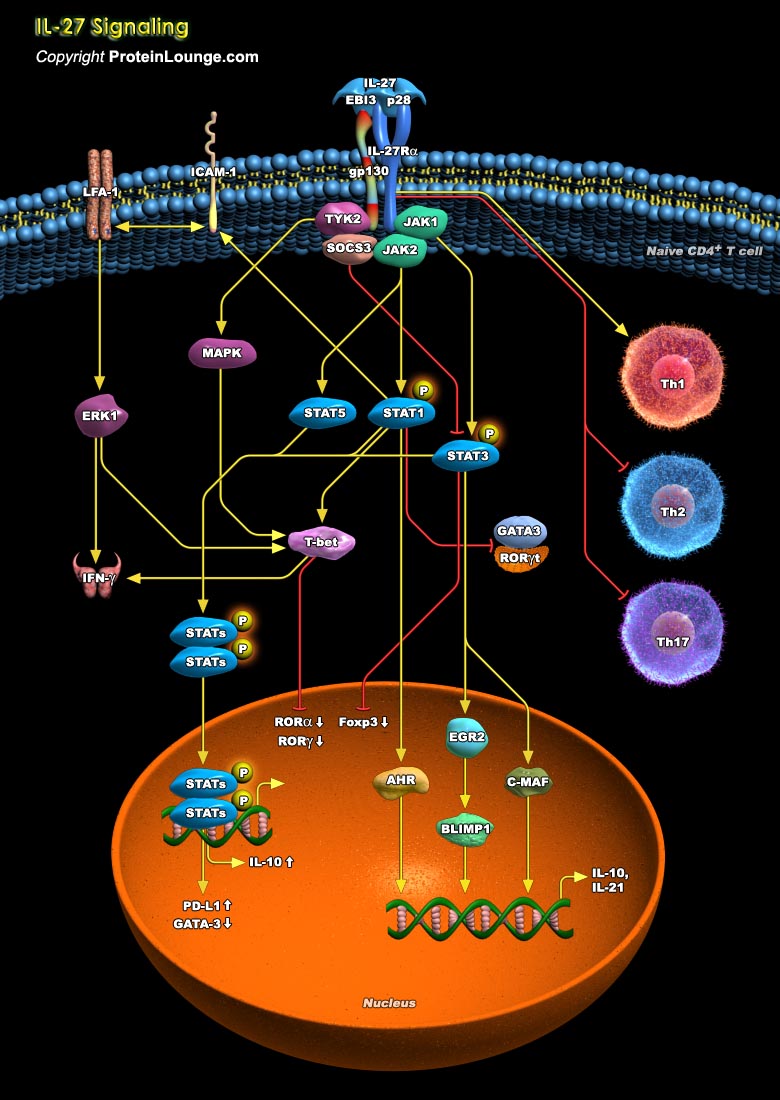
Interleukin-27 (IL-27) is a cytokine belonging to the IL-6/IL-12 family, characterized by its dual role in immunomodulation, encompassing both pro-inflammatory and anti-inflammatory attributes. The composition of IL-27 involves a heterodimeric configuration, consisting of the α-subunit IL-27p28, a protein structured with a four-α-helix bundle, and the β-subunit Epstein-Barr virus-induced gene 3 (EBI-3). This complex binds to the IL-27 receptor, a composite assembly comprising the gp130 subunit and the IL-27RA subunit. Notably, various immune cell types, including T cells, macrophages, and dendritic cells, express the IL-27 receptor (Ref.1). The interaction between IL-27 and its receptor elicits consequential signaling cascades involving Janus[..]
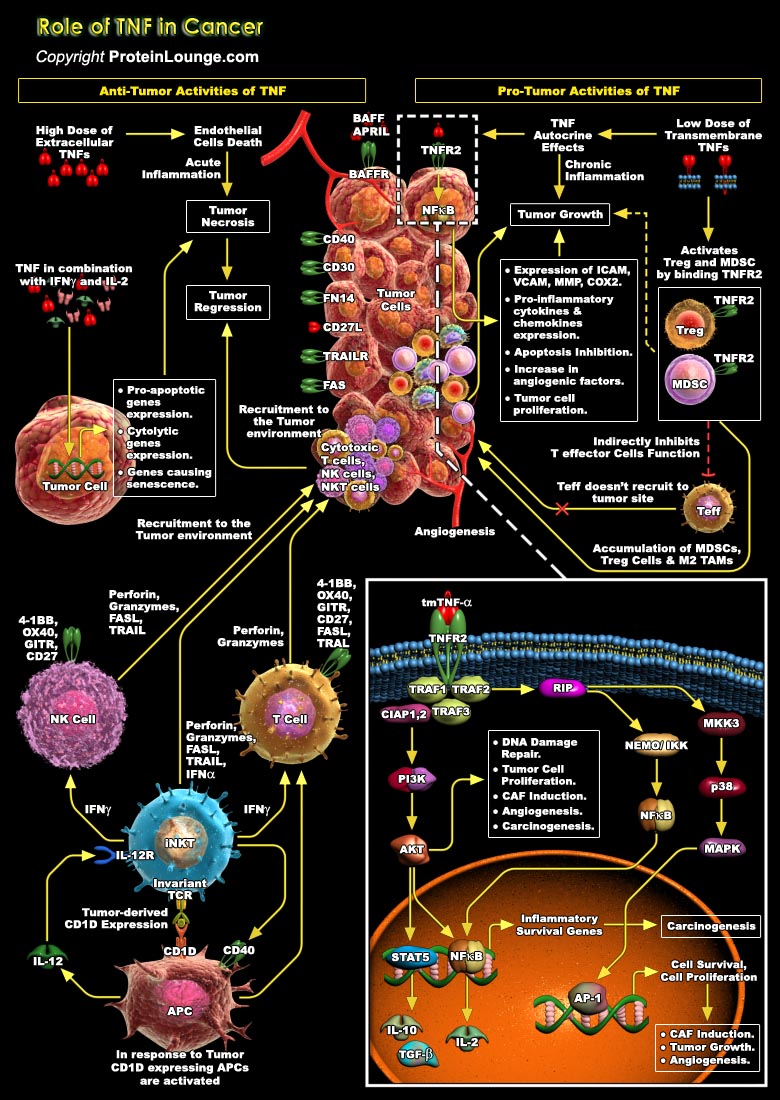
Tumor necrosis factor superfamily (TNFSF) comprises a group of cytokine ligands and their cognate receptors that are essential for the activation, proliferation, differentiation, and effector function of immune cells. TNF superfamily contains about 19 ligands and 29 receptors in humans which are implicated in many autoimmune and inflammatory diseases including cancer. Among the members, tumor necrosis factor-alpha (TNF-alpha) is one of the most extensively studied inflammatory cytokines involved in apoptosis regulation, host defense, survival, immune responses, lymphoid tissue organogenesis, and inflammation (Ref.1 and 2).TNF can function as both anti-apoptosis as well as pro-apoptosis agents under different conditions. It can not only cause the death of[..]

Cerebral ischemia (a type of Stroke) is a result of insufficient blood flow to the brain. It is a cerebrovascular disease that arises from arterial defects in the brain. It is the most common life-threatening neurological disease. It leads to limited supply of oxygen and other nutrients to meet metabolic demands. There are two types of cerebral ischemia: focal and global ischemia. Cerebral ischemia can lead to (1) cognitive impairments, (2) neuronal signalling failures, (3) pathophysiological changes in the brain, especially in hippocampus region, and (4) metabolic changes (Ref.1).Mitochondria, which are the powerhouse of cell, play a critical role in cell energy homeostasis and are thus inevitably involved in the ischemic neuronal death. After ischemia, due to the[..]

The ER (Endoplasmic Reticulum) is a crucial organelle involved in many functions. In the cell protein misfolding can results from genetic mutations affecting normal protein folding or malfunction of the cytosolic ER resident protein folding machinery. Many diseases result from misfolded protein that accumulates within the ER, where they generate a stressful condition referred to as ER stress. Cells counteract ER stress by activating a group of signaling pathways termed the UPR (Unfolded Protein Response) that coordinate a potent transcriptional program whose main purpose is restoring ER and cell function and ensuring cell survival (Ref.1). The sigma receptor is a nonopioid receptor that specifically localizes at the endoplasmic reticulum‐mitochondrion interface. This[..]
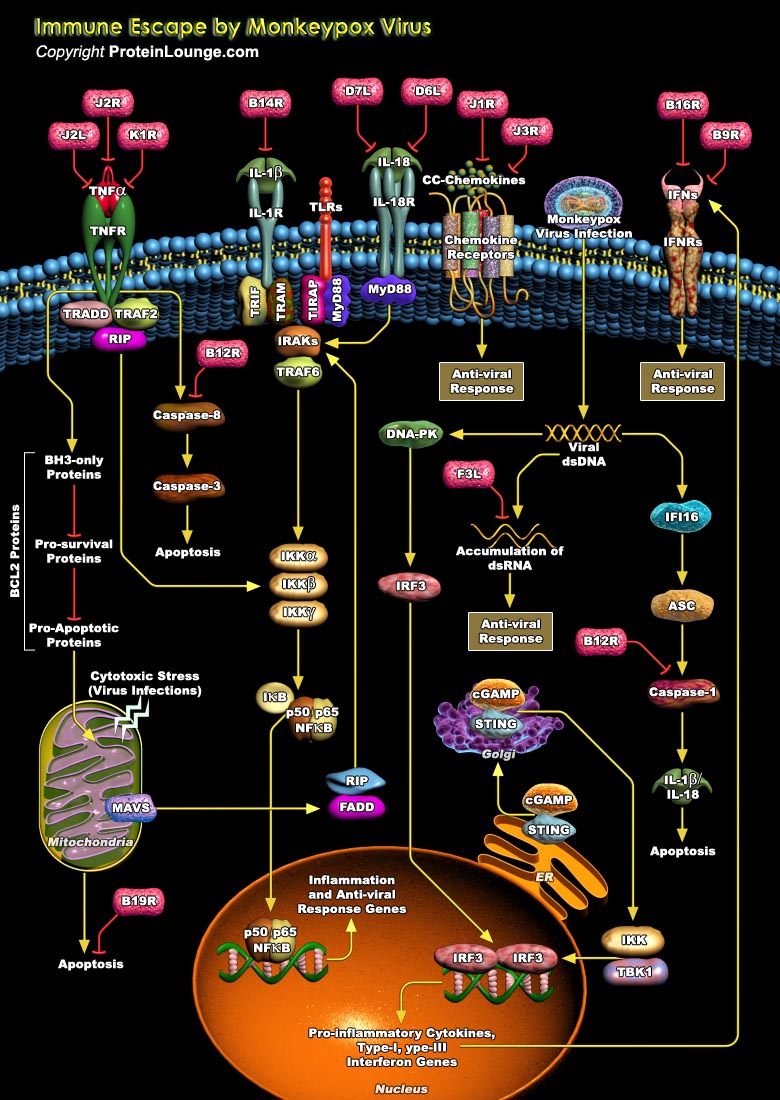
Human monkeypox (MPX) is a zoonotic disease caused by the monkeypox virus (MPXV) affecting rodents and primates mostly in western and central Africa that incidentally causes disease in humans similar to smallpox, although with notably lower mortality. The current outbreak of the disease in various parts of the world is considered an epidemic and a new global threat. MPXV, a double-stranded DNA virus, belongs to the Orthopoxvirus genus of the Poxviridae family. Monkeypox virus is considered less pathogenic than vaccinia but more pathogenic than variola (Ref.1). In response to the monkeypox infection, the human immune system becomes activated which leads to the cell antiviral signaling and inflammatory responses. Pro-inflammatory cytokines, Interferons, and nuclear[..]
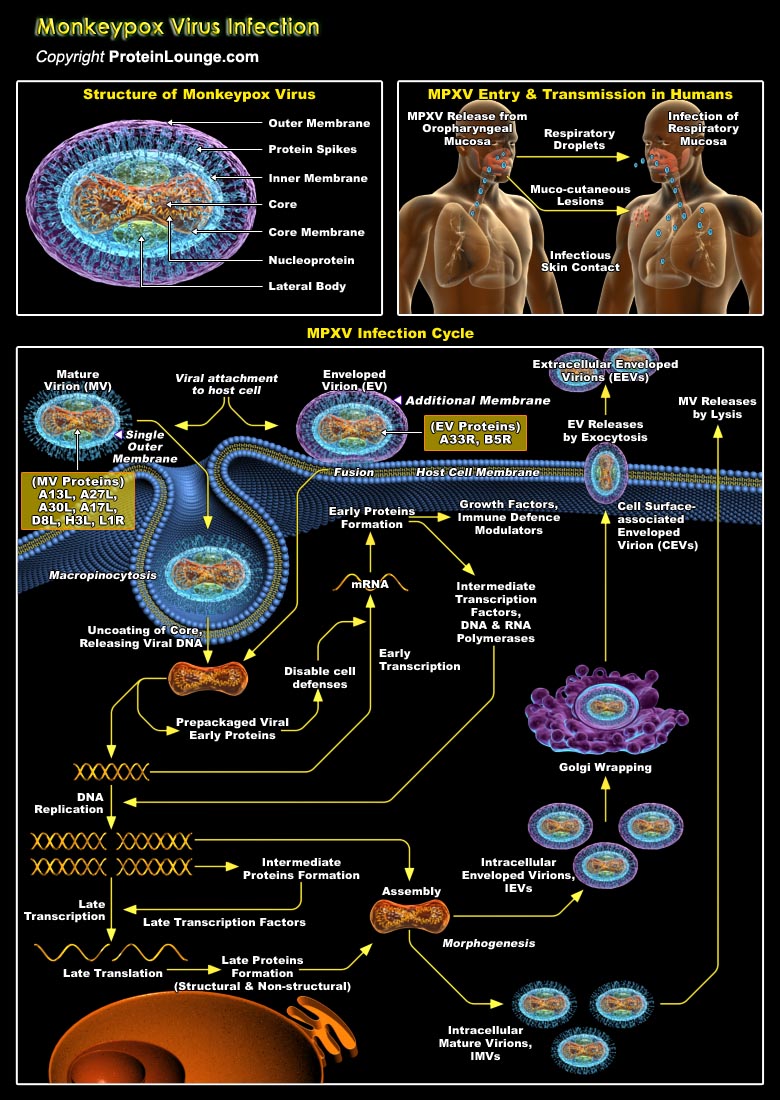
Monkeypox virus also designated as MPV, MPXV, or hMPXV is a zoonotic Orthopoxvirus that belongs to the family Poxviridae, and causes disease in humans similar to smallpox, although with notably lower mortality. This virus is endemic to western and central Africa, but the 2022 outbreak is mostly being noted in European countries and the Western Hemisphere associated with the exotic pet trade and international travel. Monkeypox virus is one of the human orthopoxviruses along with variola (VARV), cowpox (CPX), and vaccinia (VACV) viruses. The true origin of monkeypox is still unknown but several rodents and small mammals are considered possible sources of the virus. It was named monkeypox because it was first identified in 1958 in macaque monkeys. There are two genetic[..]
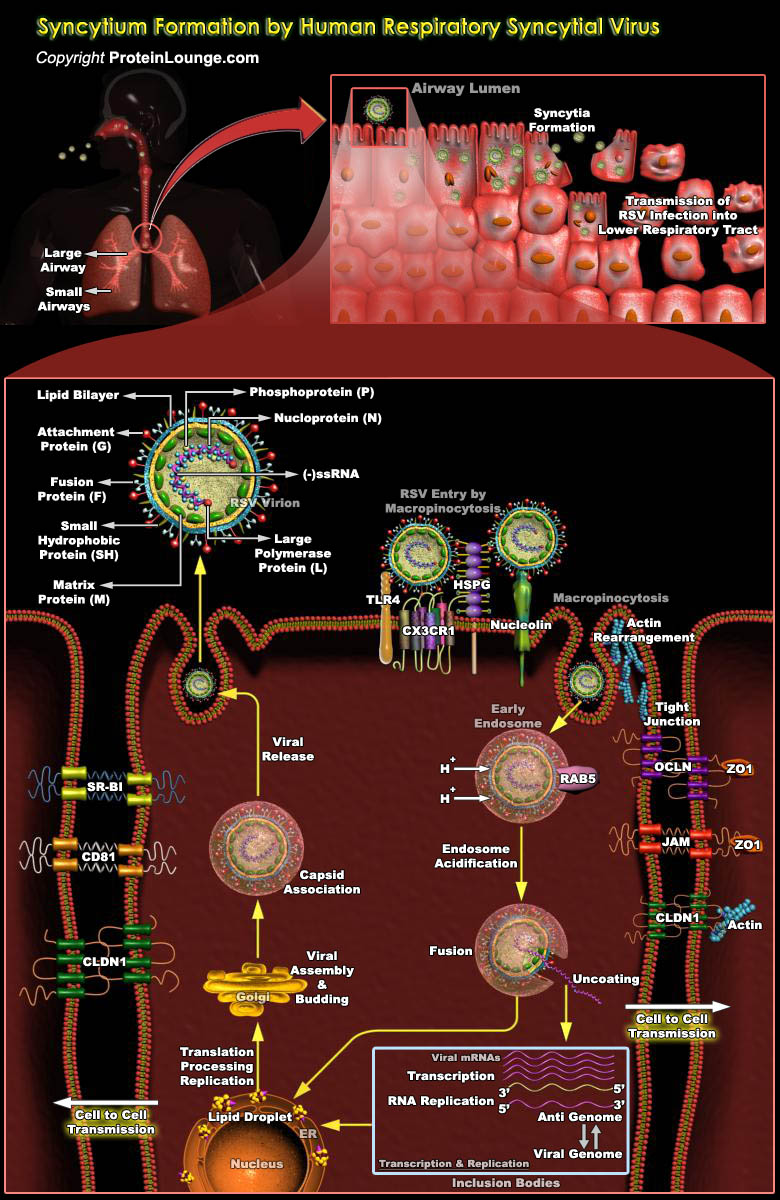
Human respiratory syncytial virus (RSV) is one of the most common viruses to infecting both children and adults, especially the elderly. RSV infection causes an upper respiratory infection in adults whereas in young children RSV causes bronchiolitis with small airway obstruction. It may progress to pneumonia, respiratory failure, apnea, and death (Ref.1).RSV is a single-stranded, negative-strand, RNA virus belonging to the Paramyxoviridae family, and is in the genus Pneumovirus. The structure of RSV is that of a bilipid-layer-envelope surrounding a ribonucleoprotein core, with several membrane proteins, one of which functions in attachment to host cells, and one of which functions in fusion to host cells. There is only one serotype of RSV, but it is[..]
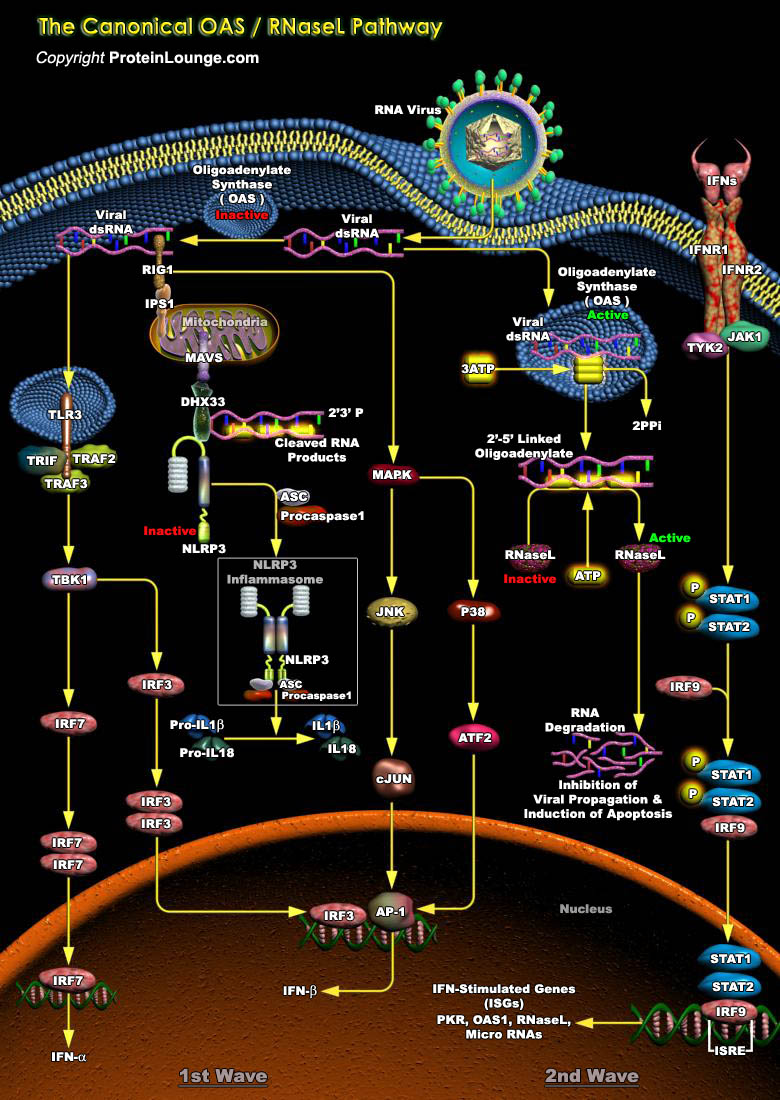
Humans are exposed to millions of potential pathogens daily, through contact, ingestion, and inhalation. Cellular innate immune system represents the first line of defense against invading pathogens. To counter virus infection, the immune system produces antiviral cytokines. Interferon (IFN) is the most powerful antiviral cytokine, and it induces IFN-stimulated genes that mediate antiviral effector functions. Among the proteins induced by IFN, the oligoadenylate synthase (OAS) proteins have been identified as enzymes that sense exogenous nucleic acid and initiate antiviral pathways (Ref.1). The innate immune system detects viral infections through the recognition of pathogen-associated molecular patterns (PAMPs) by pattern recognition receptors (PRRs); these PAMPs are[..]

Bone marrow cells called Megakaryocytes contain stem cells that give rise to red blood cells, white blood cells, and platelets. Platelets are tiny blood cells that help your body form clots to stop bleeding. Platelets functions as reporters, messengers and active transporters surveying the vasculature. They are concentrated in a fluid layer adjacent to the vessel wall and can immediately sense a biochemical or physical alteration of the endothelial lining. When the endothelial lining is intact and healthy, circulating platelets are maintained in a non-adhesive state. Several factors released from endothelial cells, including nitric oxide (NO), Prostacyclin (prostaglandin I2, PGI2), and ADPase, act to keep circulating platelets in a resting state. The intact[..]
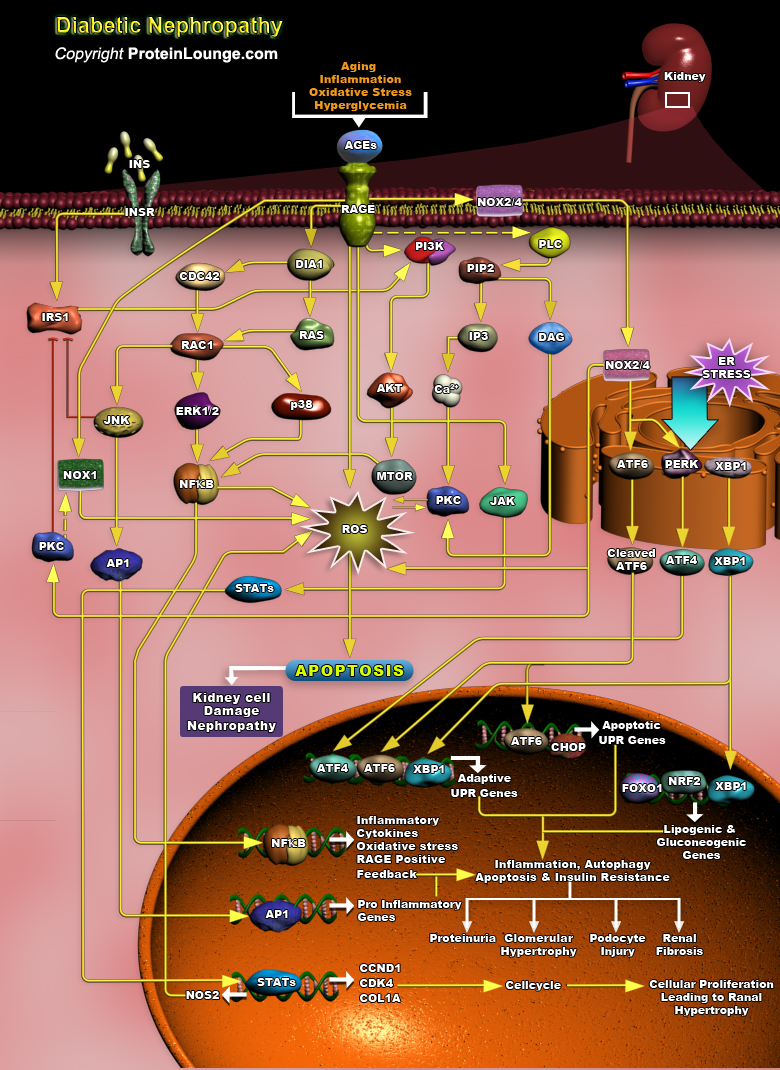
Diabetes is characterized by hyperglycemia, and its control only slowly hinders the progression of the disease’s complications, without stopping them. Hyperglycemia triggers several metabolic signaling pathways that leads to inflammation, cytokines secretion, cell death, and consequently to diabetic complications. These are represented by inflammation in the vessels or in the nerves, such as in nephropathy, retinopathy, and cardiovascular diseases. Several signaling pathways can be altered by having hyperglycemia in different tissues, producing oxidative stress, the formation of advanced glycation end products AGEs (Advanced glycation end products), as well as the secretion of the pro-inflammatory cytokines and cellular death (pathological autophagy and/or[..]

Glucose is the most common source of cellular energy and a substrate for many biochemical processes. It is typically produced from ingested dietary carbohydrates but may also be created within the body using gluconeogenesis. Once inside the cell, glucose enters a cycle of changes to release energy in the form of ATP. Normal cells with access to oxygen utilize glycolysis to metabolize glucose into two molecules of pyruvate and form two molecules of ATP. The pyruvate is further oxidized in the mitochondria to acetyl-CoA via the pyruvate dehydrogenase complex. Acetyl-CoA then enters the Krebs cycle, in which it is oxidized into 2 molecules of CO2. The electrons derived from this process are used to create three molecules of NADH and one molecule of FADH2. These electron[..]

